Simulating Optimum Design of Handling Service Center System Based on WITNESS
TANG Wusheng; LI Qinghua; MA Shiqiang

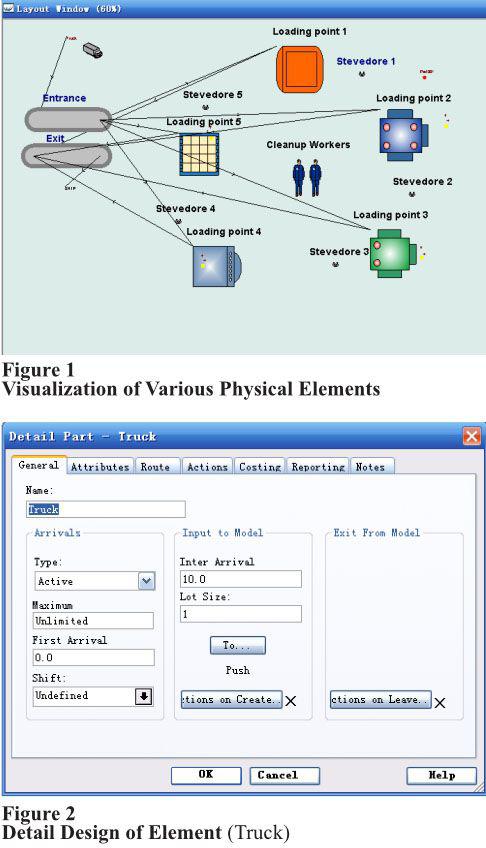
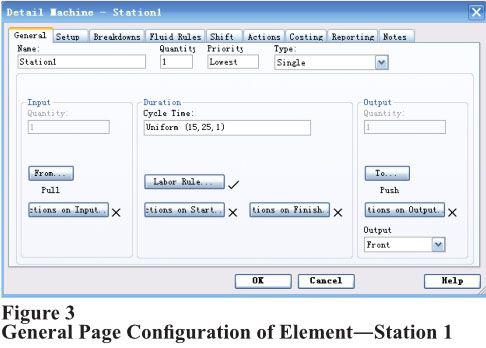
Abstract
This paper creates personnel dispatching model of handling service center using simulation software―WITNESS. It also makes recommendations for improvement and improvement measures via the research and analysis of handling pipeline to achieve the following objectives: improving the efficiency of operating personnel and tooling equipment; reducing the working hours consumption of handling, and reducing costs; reducing the handling efficiency problems due to fewer or lack of personnel; reducing logistics costs of enterprises, including handling with the most rapid speed and staff scheduling; finding bottleneck resources of this center and strategies to address artificial constraints.
Key words: WITNESS handling service center; System simulation; Optimized design
INTRODUCTION
Software-WITNESS provides Interactive object-oriented modeling environment, dynamic modeling and simulation run of production system processes, flexible strategies implementation, strong Friendly and other features, which is an excellent tool for process analysis and improvement. Using Logistics Simulation Software-WITNESS to perform modeling and simulation program, it can conduct evaluation figuratively, visually and objectively before the actual implementation. Meanwhile, it can identify unreasonableness of the program via the analysis of the simulation process and results, which can have some improved optimizations. In the logistics process, handling activities are emerging and repeatedly, it often becomes a key determinant of logistics speed, which is an important part of affecting the efficiency of logistics and determining technical and economic effects of logistics. On the basis of handling basic theory, using logistics simulation software―WITNESS to perform simulation system design on staff scheduling of handling service center can pre-select to take staff scheduling scheme. It can reduce enterprise economic losses and raise the productivity of enterprises.
1. SYSTEM DESCRIPTION AND WORKFLOW OF HANDLING SERVICE CENTER
The following describes a service center that is responsible for cleaning trucks and loading cargo. The staff scheduling of this center belongs to the classic five philosophers dining problem.
Five loading points located around the central area of service center, every two loading points has one stevedore. This service center has two cleanup workers who are responsible for cleaning trucks.
(a) One trucks come and need service from this service center every 10 minutes, each trucks perform once loading and once cleanup service in the service center.
(b) Cleanup workers are not allowed to cleanup that truck during loading, while loading is not allowed during cleaning operation of the truck.
(c) Any trucks will be in cleanup status or in loading status during loading points, or in the status of waiting workers.
(d) During loading, trucks must accept two stevedores close to it. When there is less than two stevedores, it should be in the status of waiting workers; Once the stevedores are occupied by a truck, then it should be in a occupied status. It will be released until the loading of that truck is finished.
(e) Any stevedores can be occupied by a truck that is close to him. And he can only be occupied by a truck that is close to him. According to the FIFO rules, adequate cargo and two complete service, then trucks can leave.
(f) Let the time (min) length of every cleanup service of each truck is from a normal distribution N (10, 8), and the time length of each loading subjects to uniform distribution U (15, 25). Initial status is: trucks 1, 3 and 5 of loading points as first accepting cleanup service status, 2 and 4 as first accepting loading service.
2. CREATING A SYSTEM SIMULATION MODEL OF HANDLING SERVICE CENTER
2.1 Elements Definition
According to the System Description and Workflow of Handling Service Center, defined one truck of part type element in the WITNESS environment, 5 elements of machine type which represents 5 loading points respectively, 2 elements of conveyor type is the entrance/ exit of the service center, and 7 elements of labor type is the cleanup workers and stevedores. Physical elements are defined as shown in Table 1.
2.2 Visual Elements (Display) Design
According to the various physical elements types and different physical characteristics of description in the handling service center system, it can select icons that able to represent each physical in the system icon library, or by 3rd-party graphic software to design required icons of those physicals. Display features of each physical element are defined as shown in Figure 1.
2.3 Element Detail Design
(i) Detail design of Part (Element): Truck are shown as Figure 3
Type: Active
Inter Arrival: 10.0
To…: Push to Entrance at Rear
(ii) Detail Design of Machine (Element)
(a) General page configuration of Station (Element) is shown as Figure 3.
In the Detail Dialog of Station1, General page configuration are as below, detail design of other loading points are similar with it.
Station1.Cycle Time: UNIFORM (15, 25, 1).
! The time needed from every loading of trucks in the loading point 1 subjects to evenly distribution of 15-25minutes, and the Random integer flow is 1.
Station1.Input (From…): PULL from Entrance at Front.
Station1.Output (To…): PUSH to Exit at Rear.
Station1.Labor Rule…: Stevedore1 AND Stevedore5.
! Trucks of loading point 1 needs stevedore1 and stevedore5 in every loading.
(b) Setup page configuration of Station (Element) are shown as Figure 4.
Click Add/Remove… in the Setup page, Add/Remove Setups dialog appears.
Enter “rid up” under Setup Description, click Add to add successfully, click OK return to Detail dialog Setup page, perform configuration as below: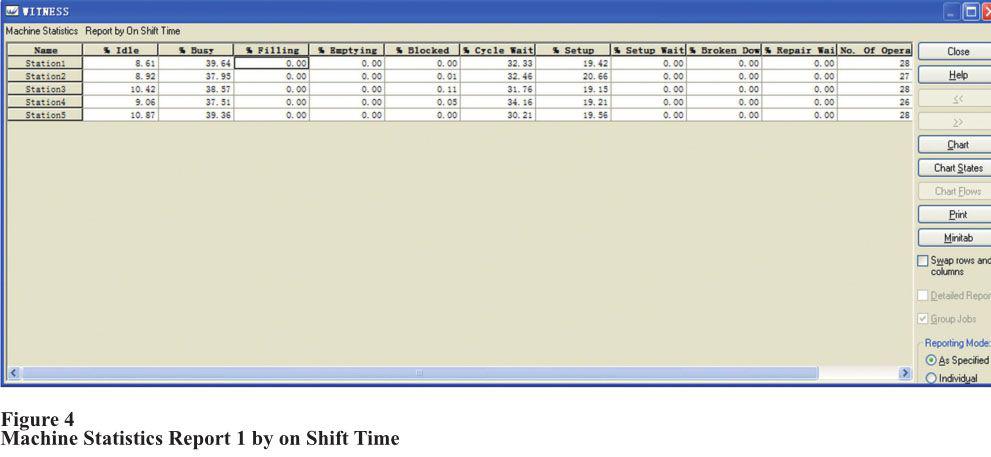
Station1.Setup Interval (No. of): 1 truck accepts once cleanup service.
Station1.Setup Interval (Ops to First): 0 loading point 1 initial status to first cleanup the truck.
Stations. Setup Duration (Setup Time): Normal(10,2.828,6) time of truck accepts once cleanup service subjects an average value of 10, standard deviation as normal distribution of 2.828, Random integer flow as 6.
Stations. Setup Duration (Labor Rule…): Dustman.
Detail definition of other loading points are similar with it, only the configuration under Labor Rule…should be set as Stevedore2 AND Stevedore1, Stevedore2 AND Stevedore3, Stevedore3 AND Stevedore4, Stevedore4 AND Stevedore5, time configuration can choose a different random integer flow each other in the Setup page: Set 1, 0 1, 0 respectively in Setup Interval (Ops to First)configuration.
(iii) Detail Design of Conveyor (Element)
Detail Design of Conveyor (Element) Entrance and Exit are similar
Entrance. Length in Part: 10
Entrance. Movement Index Time: 1
Exit. Length in Part: 10
Exit. Movement Index Time: 1
Exit. Output (To…): PUSH to SHIP
3. MODEL RUNS AND DATA ANALYSIS
Model simulation operation takes the system default time unit as 1min, running model 1440 (60×24) simulation time unit, below statistical data are obtained, and they are shown as Figures 4, 5 & 6.
Analysis of the statistical results of model runs, performing improvements on the service center. Increasing one stevedore at Station1 and Station2, working status of each loading point obtained below statistical data, they are shown as Figure 7, 8 & 9.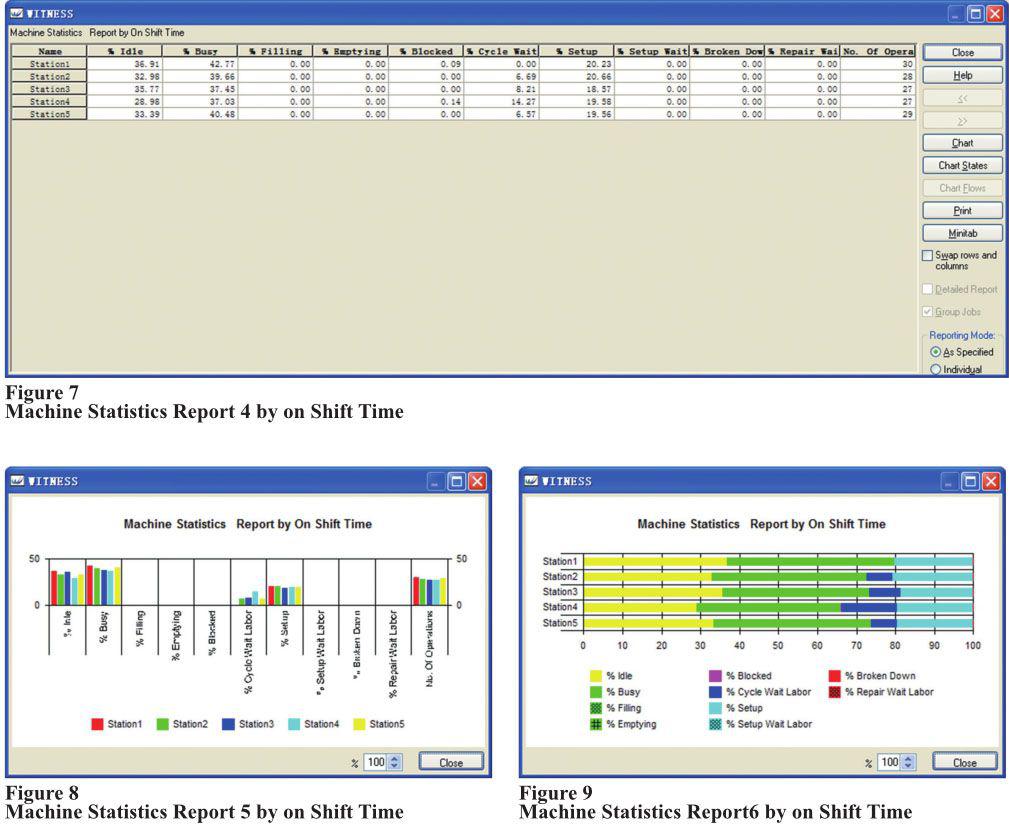
CONCLUSION
Through the above comparative analysis of statistical data, increasing one stevedore between Station1 and Station2, that can raise the times of completion service. And the idle rate of each loading point is increased; the percentage of use from waiting stevedore is decreased. This can greatly improve the handling efficiency of handling service center.
This service center can adjust the scheduling plan, or increase the working efficiency of stevedore to address the constraints of the whole service center from stevedores, so that it can raise the actual utilization rate of the working station. Meanwhile, it can raise the satisfaction of clients on the service center. Management personnel can combine this simulation system with actual requirement to perform scheduling on the staffs of service center.
REFERENCES
Davis, M. M., Aquilano, N. J., & Chase, R. B. (2003). Fundamentals of operations management. McGraw-Hill Book Company.
Feng, Y. C., Zou, Z. H., & Zhou, H. (1998). Discrete system simulation. Mechanical Industry Press. (In Chinese).
Gao, L. N., Wang, Y. C., & Zhang, Y. D. (2005). Simulation and optimization analysis of simulation technology of library service system based on witness 2003. Library and Information Technology, 12, 78-81. (In Chinese).
Kennes, J., & Schiff, A. (2002). The value of a reputation system. Economics working paper archive at WUSTL.
Li, P. G. (1998). Theory and solutions of Performance analysis modeling of manufacturing systems. Huazhong University Press. (In Chinese).
Li, X. X. (2007). Modeling and simulation of production line based on Flexsim. Manufacturing Information, 6, 90-91. (In Chinese).
Ma, J. D., Li, S. H., & Ge, A. H. (2003). Summary of discrete event on simulation software system. Forest Engineering, 19(4). (In Chinese).
Qi, H., & Wang, X. P. (2004). System modeling and simulation. Tsinghua University Press. (In Chinese).
Samuelson, M. (2001). Who wants a good reputation. Review of Economic Studies, 68(2), 415-441.
Wang, Y. C., & Ma, H. W. (2006). Production logistics system modeling and simulation of witness system and application. Science Press. (In Chinese).
Yang, S., & Cai, L. (2000). Discussion on system simulation and technology application. China Science and Technology Expo, (9). (In Chinese).
Yu, W. Z. (2006). Modern motivation theory and applications. Dongbei University of Finance and Economics Press. (In Chinese).
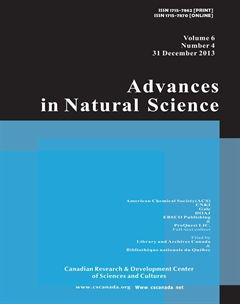 Advances in Natural Science2013年4期
Advances in Natural Science2013年4期
- Advances in Natural Science的其它文章
- Biological Significance of Spicy Essential Oils
- Nuclear Energy From the Fission Process as an Alternative Source of Energy
- Effect of APS on Hormones Regulating Blood Glucose in Active Rats
- Spectrophotometric Determination of Methyl Paraben in Pure and Pharmaceutical Oral Solution
- Population and Mutagenesis or About Hardy and Weinberg One Methodical Mistake
- Classical and Quantum Explanation of the Magnetic Focusing
